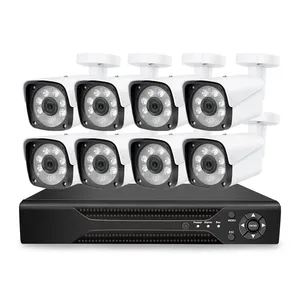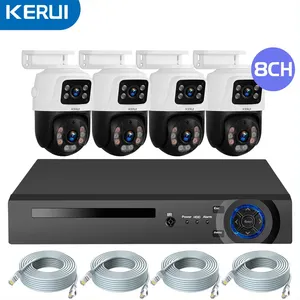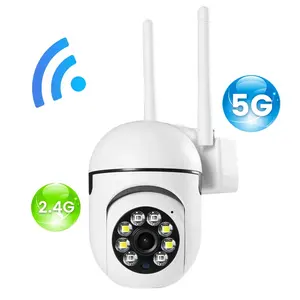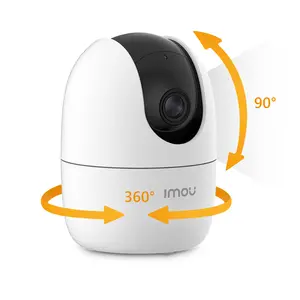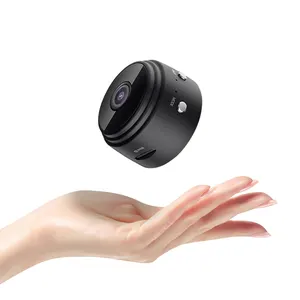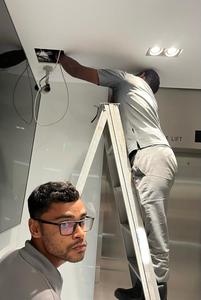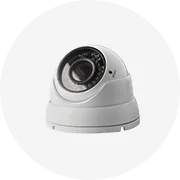Popolare nel tuo settore






Visione notturna a colori camara de seguridad home security cam videosorveglianza 1080p 5mp ahd camera hd bullet cctv camera
4,65 € - 6,04 €
Ordine minimo: 2 parti

Involucro dell'alloggiamento della telecamera a cupola a CCTV impermeabile in alluminio OEM
1,87 € - 4,66 €
Ordine minimo: 100 parti


Rimorchio solare di sorveglianza per telecamera di sicurezza 4g
3.441,41 € - 3.720,44 €
Ordine minimo: 1 insieme




Involucro per telecamera a cupola impermeabile in alluminio e ODM
0,2791 € - 0,9302 €
Ordine minimo: 100 parti







Telecamere di sorveglianza portatili telecamera di sicurezza per rimorchio solare a torre CCTV ad energia solare a torre CCTV mobile
3.521,40 € - 3.614,41 €
Ordine minimo: 2 insiemi







Rimorchio Mobile di sorveglianza solare della macchina fotografica digitale del CCTV della torre portatile per sicurezza del parcheggio
3.335,38 € - 3.521,40 €
Ordine minimo: 2 insiemi







Geniuspy OEM grandangolare piccolo modulo fotocamera Usb 5MP con Audio per l'industria e l'attrezzatura della macchina sicurezza CCTV
Pronto per la spedizione
20,47 € - 28,84 €
Ordine minimo: 2 parti
Spedizione per pezzo: 4,05 €






3mp 4mp 4G wifi 4X telecamera di sorveglianza solare PTZ HD CCTV attrezzatura a lungo raggio zoom per esterni
70,51 € - 99,43 €
Ordine minimo: 2 parti






JIND telecamera di sicurezza Wifi 360 gradi PTZ Mini piccolo 4g Sim Card batteria ricarica telecamera Cctv con CCTV Tester Monitor 7 pollici
Pronto per la spedizione
1.197,59 € - 1.596,07 €
Ordine minimo: 2 parti
Spedizione per pezzo: 19,35 €

Apparecchiature di rete 720p macchina fotografica senza fili di sicurezza per la casa
Pronto per la spedizione
7,45 € - 11,17 €
Ordine minimo: 2 parti
Spedizione per pezzo: 10,44 €






K9 IP Camera 1080P Mini Indoor CCTV Security Detect passa automaticamente visione notturna Dog Cat Pet Baby Monitor Camera
Pronto per la spedizione
7,17 € - 8,84 €
Ordine minimo: 2 parti
Spedizione per pezzo: 12,69 €
Ricerche correlate:
sicurezza cctv seculinksicurezza di sony ctvsicurezza cctv malesiaglobale cctv di sicurezza coprodotti di sicurezza del cctvsicurezza cctv di riconoscimento faccialeprodotti del cctv di sorveglianza di sicurezzaccd dummy cctv di sicurezza7 sistema di sicurezza del cctvd sicurezza cctvsicurezza del cctv taiwansicurezza cctvsistema di sicurezza del cctv 8chsicurezza del cctv irsicurezza impermeabile del cctv






Fotocamera solare 6MP con funzionalità di Zoom inclinabile per sicurezza esterna dotata di ricarica solare e supporto Audio bidirezionale
91,16 € - 93,95 €
Ordine minimo: 1 parte






Stampa su chiamata AI Smart WIFI 2K telecamera di sorveglianza 3MP telecamera Wireless visione notturna casa di sicurezza 360 gradi IP telecamere CCTV
15,63 € - 16,41 €
Ordine minimo: 2 unità






Nuovo sistema di prodotto professionale 4K filo esterno di sicurezza con visione notturna a colori cablato telecamere Cctv
37,16 € - 40,87 €
Ordine minimo: 1 parte





5.0Megapixel 4 CH Wifi 15.6 pollici schermo CCTV Kit di sicurezza Wireless bidirezionale Audio Camera
221,37 € - 228,81 €
Ordine minimo: 2 parti






Visione notturna Ip66 telecamera a cupola impermeabile Cctv 5Mp Ip telecamera di sicurezza bidirezionale Audio preimpostata vista posizione per cantiere
38,14 € - 46,42 €
Ordine minimo: 1 parte






Zoom ottico IR PTZ 1080P 30X a lungo raggio Mini telecamera Dome PTZ IP CCTV montata su veicolo esterno di sicurezza per veicolo
Pronto per la spedizione
353,45 € - 399,95 €
Ordine minimo: 1 insieme
Spedizione per pezzo: 26,08 €






Nuovo obiettivo dual 1080P wireless smart home outdoor sicurezza V380 Pro 4MP WiFi CCTV monitoraggio IP pan tilt camera
Pronto per la spedizione
12,56 € - 16,56 €
Ordine minimo: 10 scatole
Spedizione per pezzo: 4,63 €






ANRAN 1920P 8CH 5MP Wifi NVR Kit Outdoor/Indoor impermeabile Motion Detection CCTV sistema di telecamere di sicurezza apparecchiature di sorveglianza
Pronto per la spedizione
110,69 € - 129,29 €
Ordine minimo: 2 parti
Spedizione per pezzo: 20,25 €






Telecamera CCTV di rete HD a infrarossi antideflagrante industriale di alta qualità
344,15 €
Ordine minimo: 2 parti












Wistino Carecam 6MP Wireless Wifi Auto Zoom Auto Tracking telecamera CCTV visione notturna 10x Zoom visione notturna telecamera di sicurezza
Pronto per la spedizione
14,88 € - 22,32 €
Ordine minimo: 1 satola
Spedizione per pezzo: 20,31 €






Sicurezza ad alta velocità LPR ANPR telecamera CCTV prezzo targa sistema di riconoscimento telecamera ANPR
463,20 € - 556,21 €
Ordine minimo: 2 parti






Sistema di telecamere di sicurezza CCTV Wireless osphed per case con sistemi di sorveglianza per telecamere esterne IP Full HD Wifi
68,68 € - 75,20 €
Ordine minimo: 100 parti






E-era 1080p wide dynamic HDR 120fps visione notturna a infrarossi IMX290 apparecchiature industriali modulo telecamera di monitoraggio mipi
0,9209 € - 4,87 €
Ordine minimo: 5 parti






Hik Hitosino OEM 2CD2063G0-I 6 MP IR Fisso Pallottola cina top 10 cctv della macchina fotografica di marca banking di sicurezza Telecamera di Rete
Pronto per la spedizione
83,70 € - 104,82 €
Ordine minimo: 2 parti
Spedizione per pezzo: 16,49 €






4KM 10KM a lungo raggio 810nm 808nm ptz telecamera di sicurezza cctv per visione notturna laser a infrarossi per il monitoraggio dell'azienda agricola
1.302,16 € - 1.488,18 €
Ordine minimo: 2 insiemi






ShenZhen ZENTO Riconoscimento Automatico e Protezione di Sicurezza lpr Sistema di Parcheggio da HD Telecamera di Sicurezza
3.068,43 €
Ordine minimo: 1 insieme






4K sorveglianza esterna telecamera di sicurezza solare collegamento allarme doppia lente CCTV 4G WIFI telecamera PTZ solare
89,30 € - 137,66 €
Ordine minimo: 2 parti






AI Binoculare Termico Imaging Attrezzature di Misurazione della Temperatura Del Corpo Della Fotocamera Macchina Fotografica di riconoscimento facciale Sistema di sicurezza del CCTV AP-TI003
Pronto per la spedizione
795,25 € - 823,15 €
Ordine minimo: 1 parte
Spedizione per pezzo: 22,68 €






1920p 1mp 5mp Imx335 Imx307 Exmor P2p Security Indoor Ip Camera Atm Self-Service Equipment Xmeye App
9,31 € - 83,71 €
Ordine minimo: 1 parte






Telecamera IP Wifi intelligente da esterno da 2mp telecamera PTZ per visione notturna IR a colori 1080P telecamera di sicurezza CCTV Cloud Storage
10,24 € - 11,17 €
Ordine minimo: 200 insiemi






Telecamera per lampadina Wireless domestica apparecchiatura di sorveglianza Wifi telecamera di sicurezza ip hd 1080p sistema di telecamere cctv ip automatico ai
Pronto per la spedizione
2,31 € - 4,47 €
Ordine minimo: 2 parti
Spedizione per pezzo: 43,12 €






Rimorchio di sorveglianza per apparecchiature CCTV per esterni mobili
9.022,06 €
Ordine minimo: 2 unità






Mini telecamere più piccolo Cctv telecamera Cctv collegato al telefono cellulare Hd 720p rotante di 360 gradi Smart Wifi Ptz Ip
Pronto per la spedizione
13,95 € - 15,58 €
Ordine minimo: 10 parti
Spedizione per pezzo: 4,08 €






FSAN H.265 Full HD rete CCTV sistema di sicurezza 4CH 5MP POE telecamera NVR Kit di sorveglianza telecamere di sorveglianza 5mp Ip
79,99 € - 88,37 €
Ordine minimo: 2 parti
Migliori categorie
Su dotare la sicurezza cctv
Alibaba.com offre prodotti 1460 dotare la sicurezza cctv. È disponibile una vasta gamma di varietà di dotare la sicurezza cctv, quali rilevamento del movimento, a due vie audio, e impermeabile/resistente alle intemperie. È inoltre possibile scegliere tra carta di deviazione standard, scheda di memoria, e micro carta di deviazione standard dotare la sicurezza cctv. Così come da ptz macchina fotografica, della cupola della macchina fotografica, e solare macchina fotografica dotare la sicurezza cctv.E se il dotare la sicurezza cctv è il marchio su misura, software reengineering, o oem odm.
